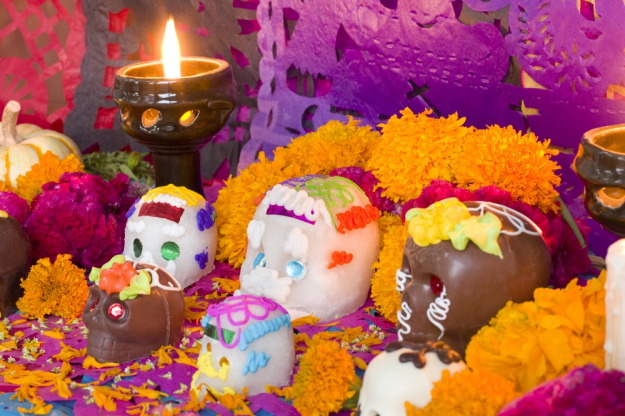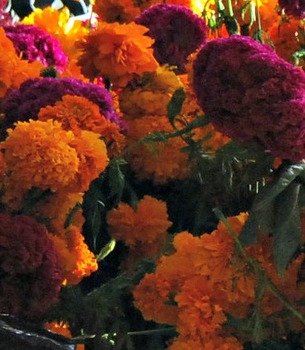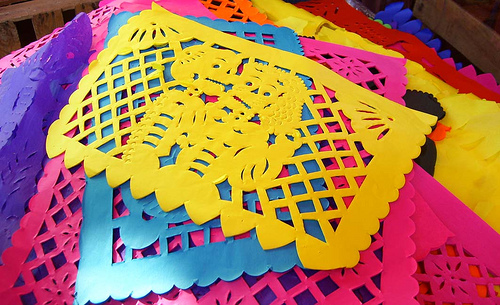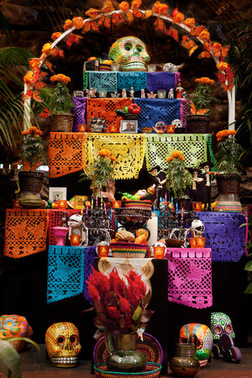While your altar will be a unique representation of your preferences and personal style, there are some traditional elements that should be incorporated into the space. Each item has significance, though you may add special ofrendas, or offerings, of your own.
Here is a list of elements (and their significance) to build your own altar to honor your dearly departed.
Tablecloth: Cover the table or surface on which the altar
will be built. Some altars are bright and cheerful, with colorful tablecloths and sheets as the backdrop, while others feature a more sombre black or dark colored cloth.
Photos of loved ones: Ideally, there should be at least one photo of each person being honored. Place photos in the center, as a focal point of the altar.
Candles: Set a candle for each deceased relative. White represents the purity of the soul, and the light is believed to guide the spirits on their journey back.
Papel picado: The delicate paper represents wind and the fragility of life.
Flowers: Marigolds are preferred, but they are difficult to
find. If you can't find marigolds then mums in oranges and golds make good substitutes.
Personal items of the deceased: Objects they used daily or were especially fond of.
Tablecloth: Cover the table or surface on which the altar
will be built. Some altars are bright and cheerful, with colorful tablecloths and sheets as the backdrop, while others feature a more sombre black or dark colored cloth.
Photos of loved ones: Ideally, there should be at least one photo of each person being honored. Place photos in the center, as a focal point of the altar.
Candles: Set a candle for each deceased relative. White represents the purity of the soul, and the light is believed to guide the spirits on their journey back.
Papel picado: The delicate paper represents wind and the fragility of life.
Flowers: Marigolds are preferred, but they are difficult to
find. If you can't find marigolds then mums in oranges and golds make good substitutes.
Personal items of the deceased: Objects they used daily or were especially fond of.
Food and drink: Favorite foods specially prepared as an
offering.
Pan de muerto: Sweet bread in the form of bones or skeletons, to represent soil.
Skulls or skeletons: Generally brightly colored skulls made of molded sugar inscribed with the name of the honoree represent vitality of life and personality
Copal incense: The light smoke and aroma are thought
to carry prayers to God.
Water: Purifies, cleanses and quenches the thirst of the
souls.
offering.
Pan de muerto: Sweet bread in the form of bones or skeletons, to represent soil.
Skulls or skeletons: Generally brightly colored skulls made of molded sugar inscribed with the name of the honoree represent vitality of life and personality
Copal incense: The light smoke and aroma are thought
to carry prayers to God.
Water: Purifies, cleanses and quenches the thirst of the
souls.
Now that we have the essential elements, it's time to assemble the altar. Your Day of the Deade altar can be as simple or as elaborate as you want. The purpose of an altar is remembrance, with that in mind feel free to do what you think your honoree would enjoy.



